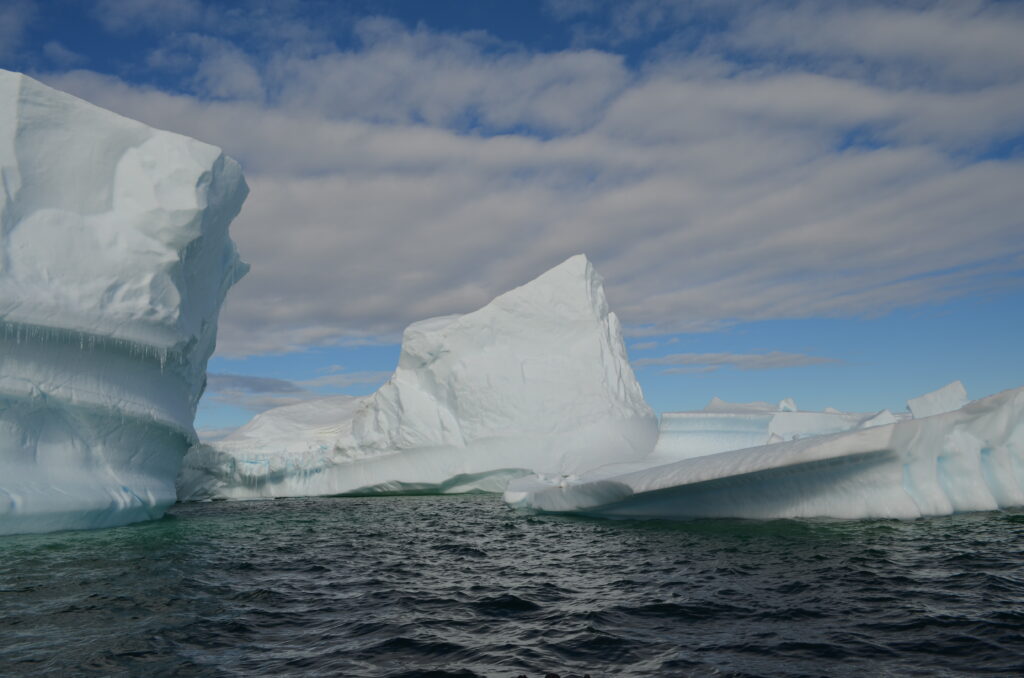
It’s time for the willing suspension of disbelief. Let’s say that you’re leaving town for a while and want to have a nice glass of wine but can’t finish the bottle. Or, maybe you have several bottles left over after a party that you can’t bear to throw out. What to do? Drink what you will and then . . . cork the bottle and put in in the freezer. The wine will be fine when you thaw it and, no, I’m not making that up. (The picture above is of an Antarctic iceberg, which seemed more interesting than a picture of a refrigerator).
Won’t freezing wine ruin it? We hear so often that wine must be treated gently and stored properly to maintain its quality, and freezing seems pretty traumatic. Yet it works. I don’t know the science behind it, other than cold slows the chemical processes that cause wine to degrade. Some of the wine’s components will separate when it freezes, so it may taste a little different when thawed.
- How long can you store wine in the freezer? Based on considerable research, the answer is: I haven’t a clue. I’ve seen suggestions that three to six months is the limit and that seems sensible. Our test wine was frozen for ten months with good results. The bottom line seems to be that shorter is probably better than longer, and you have nothing to lose by trying it – the wine will be safe to drink, and if it’s unpalatable just pour it out.
- Thawing the wine. Put the bottle in the refrigerator for several hours and then on the counter to complete thawing. Once it reaches proper serving temperature, give the bottle a gentle swirl to integrate any separated components and you’re ready to go. For the best result, consume the wine soon after it thaws.
Some caveats.
- Don’t freeze a full bottle. Wine (which is mostly water) expands when it freezes, and that will either push the cork out, break the bottle, or both. So, make sure that there’s plenty of room for expansion. If you accidentally freeze a full bottle (maybe you put it in for a quick chill and forgot it), make sure that the bottle didn’t break.
- Don’t freeze a sparkling wine. It’s already under pressure, and thus more prone to explode. In any event, the carbonation will be lost and thus there’s not much point in doing this.
- Make sure that the cork is inserted solidly. You don’t want the wine to leak before it freezes. If the wine has a screw top so much the better.
Our test bottle, and wine of the week, is a 2017 Marisa Willamette Valley Pinot Noir (about $35 retail). It’s produced by Ponzi Vineyards, and the name evokes the names of the second-generation owners Anna Maria and Luisa Ponzi. Ponzi Vineyards, founded in 1970, was one of the Willamette Valley pioneers, and makes excellent wines.
- Marisa is a very nice wine, and we decided to have a glass before leaving town for a while. Half of the bottle remained, so we screwed the top back on and put it in the freezer. The idea was to thaw it in a month or so . . . and then we forgot about it for ten months.
- We expected to find a tasteless, unpalatable wine, but were pleasantly surprised. The wine still had nice cherry, strawberry and earthy notes, with soft tannins. In a blind tasting we would not have known that it had been frozen or thought it substandard. In fact, it was very enjoyable to drink, and it would have been interesting to have a fresh bottle to compare it against.
- A suggested food pairing: frozen salmon, of course.
Cheers!
